Gallery: Planck Spacecraft Sees Big Bang Relics
Galactic Haze Seen by Planck
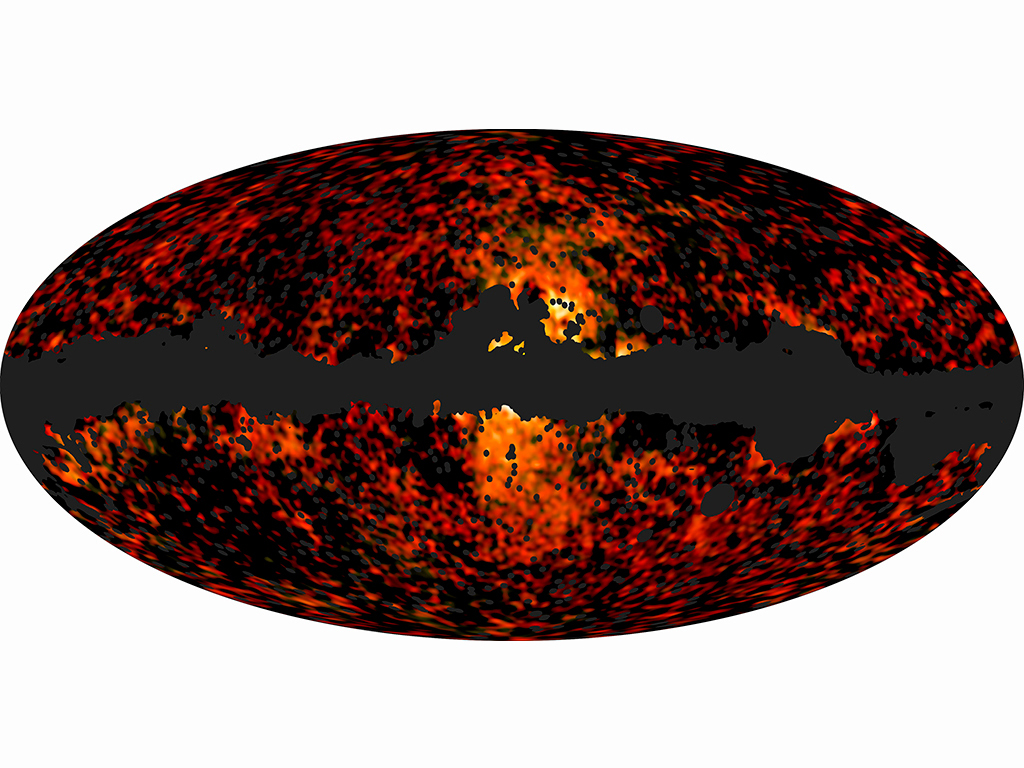
This all-sky image shows the spatial distribution over the whole sky of the galactic haze at 30 and 44 GHz, extracted from the Planck observations. Image released February 13, 2012.
Planck All-Sky Image Superimposition
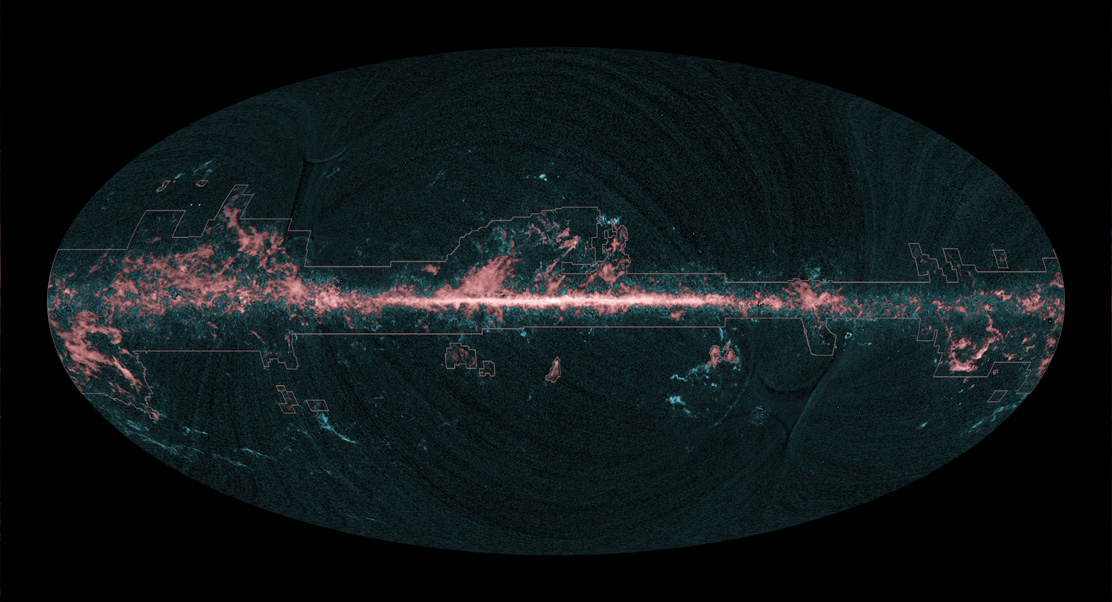
This all-sky image shows the distribution of carbon monoxide (CO), a molecule used by astronomers to trace molecular clouds across the sky, as seen by Planck (blue). A compilation of previous surveys (Dame et al. (2001)), which left large areas of the sky unobserved, has been superimposed for comparison (red). The outlines identify the portions of the sky covered by these surveys. Image released February 13, 2012.
Cepheus Molecular Cloud Complex
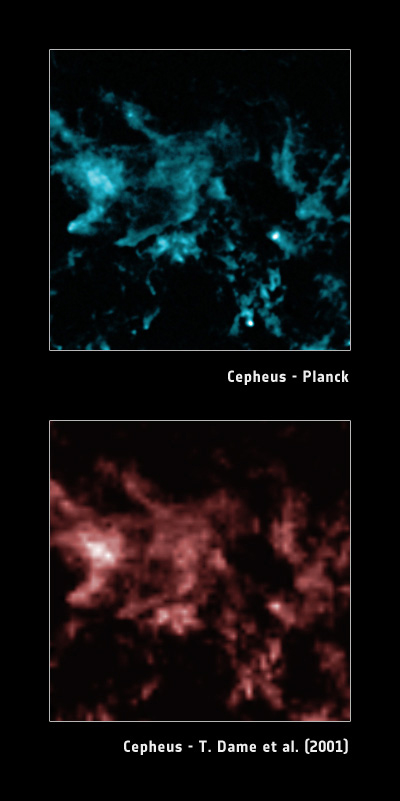
This image shows the Cepheus molecular cloud complex as seen through the glow of carbon monoxide (CO) with Planck (blue). The same region is shown as imaged by previous CO surveys (Dame et al., 2001) for comparison (red). Image released February 13, 2012.
All-Sky Distribution of Carbon Monoxide
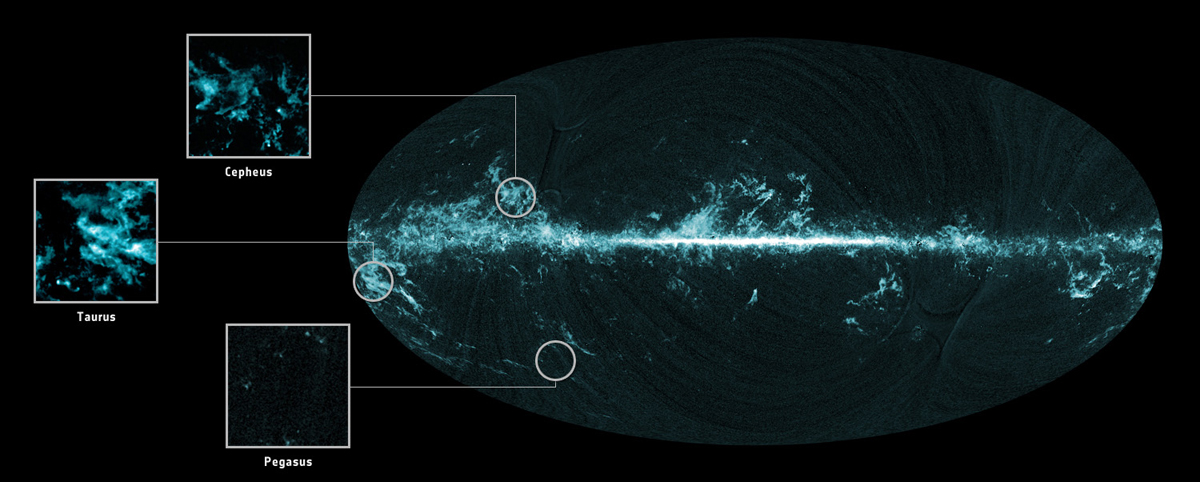
This all-sky image shows the distribution of carbon monoxide (CO), a molecule used by astronomers to trace molecular clouds across the sky, as seen by Planck. The inserts provide a zoomed-in view onto three individual regions on the sky where Planck has detected concentrations of CO: Cepheus, Taurus and Pegasus, respectively. Image released February 13, 2012.
All-sky Distribution of Carbon Monoxide (CO).
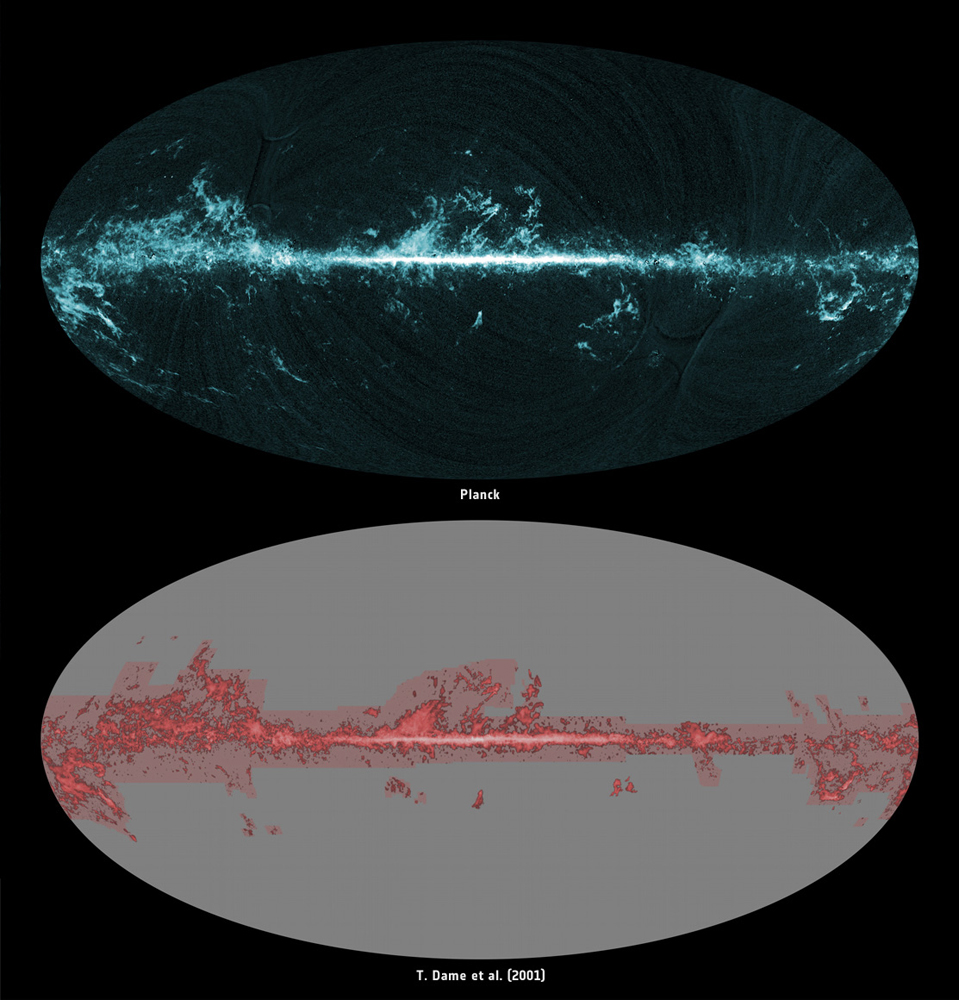
This all-sky image shows the distribution of carbon monoxide (CO), a molecule used by astronomers to trace molecular clouds across the sky, as seen by Planck (blue). A compilation of previous surveys (Dame et al. (2001)), which left large areas of the sky unobserved, is shown for comparison (red). Image released February 13, 2012.
Taurus Molecular Cloud Complex
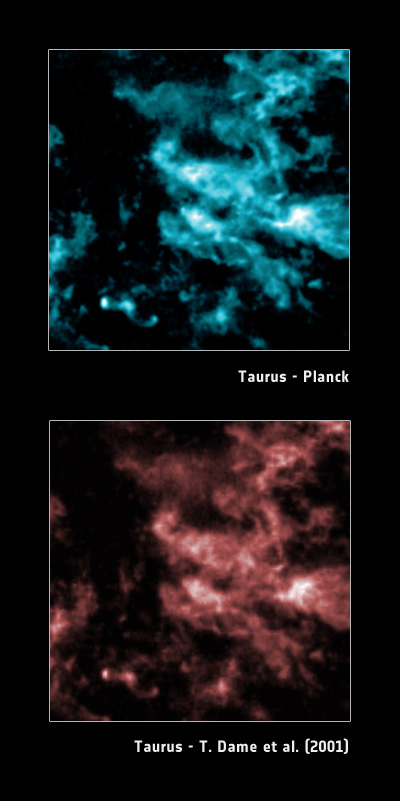
This image shows the Taurus molecular cloud complex as seen through the glow of carbon monoxide (CO) with Planck (blue). The same region is shown as imaged by previous CO surveys (Dame et al., 2001) for comparison (red). Image released February 13, 2012.
Molecular Clouds in the Pegasus Region

This image shows molecular clouds in the Pegasus region as seen through the glow of carbon monoxide (CO) with Planck (blue). Image released February 13, 2012.
Get the Space.com Newsletter
Breaking space news, the latest updates on rocket launches, skywatching events and more!
Planck's Microwave Sky
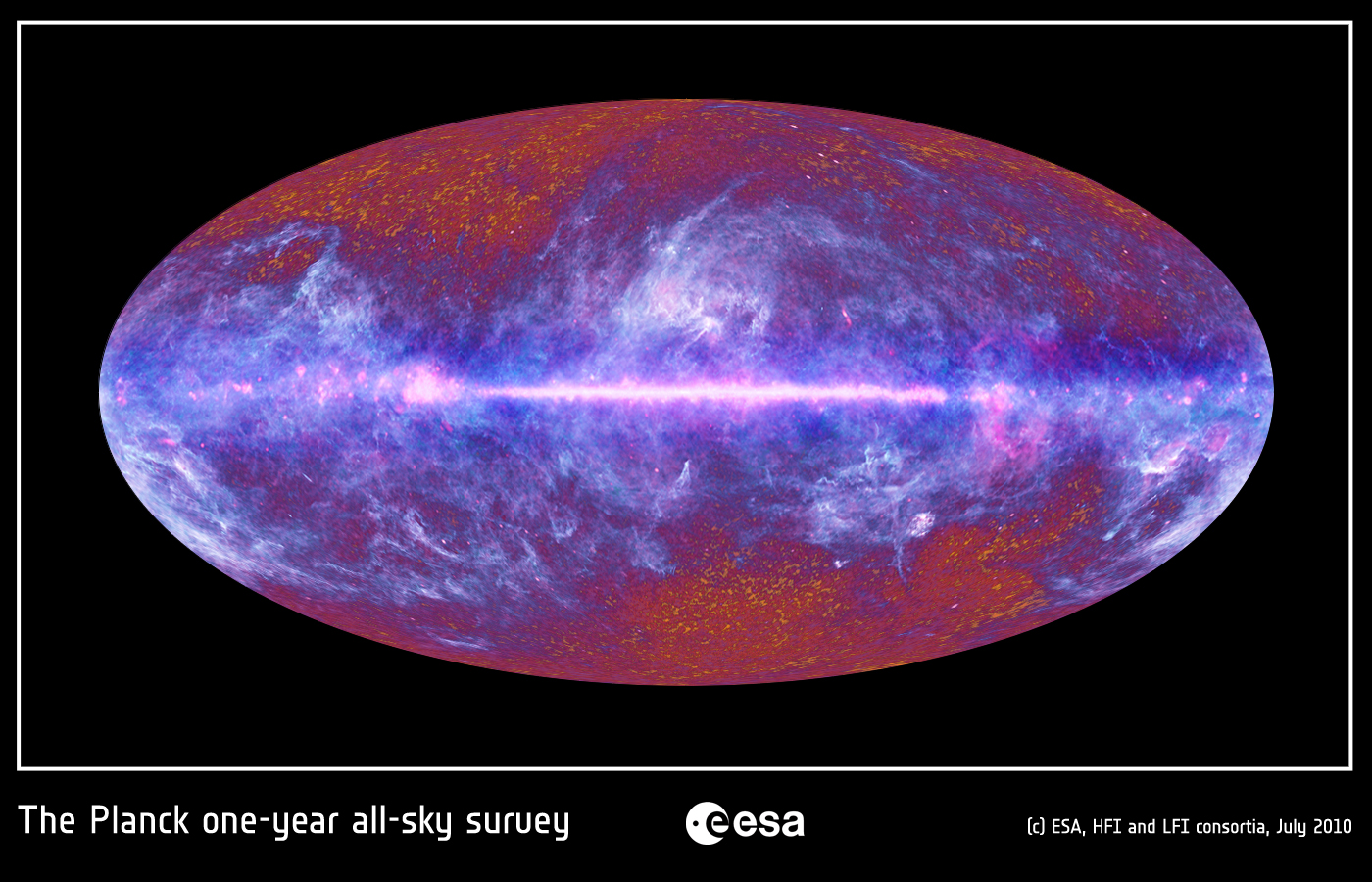
This multi-frequency all-sky image of the microwave sky has been composed using data from Planck covering the electromagnetic spectrum from 30 GHz to 857 GHz. This image was released on July 5, 2010.
The mottled structure of the cosmic microwave background, with its tiny temperature fluctuations reflecting the primordial density variations from which today’s cosmic structure originated, is clearly visible in the high-latitude regions of the map. The central band is the plane of our Galaxy. A large portion of the image is dominated by the diffuse emission from its gas and dust. The image was derived from data collected by Planck during its first all-sky survey and comes from observations taken between August 2009 and June 2010. This image is a low- resolution version of the full data set.
Planck's Orbit at L2
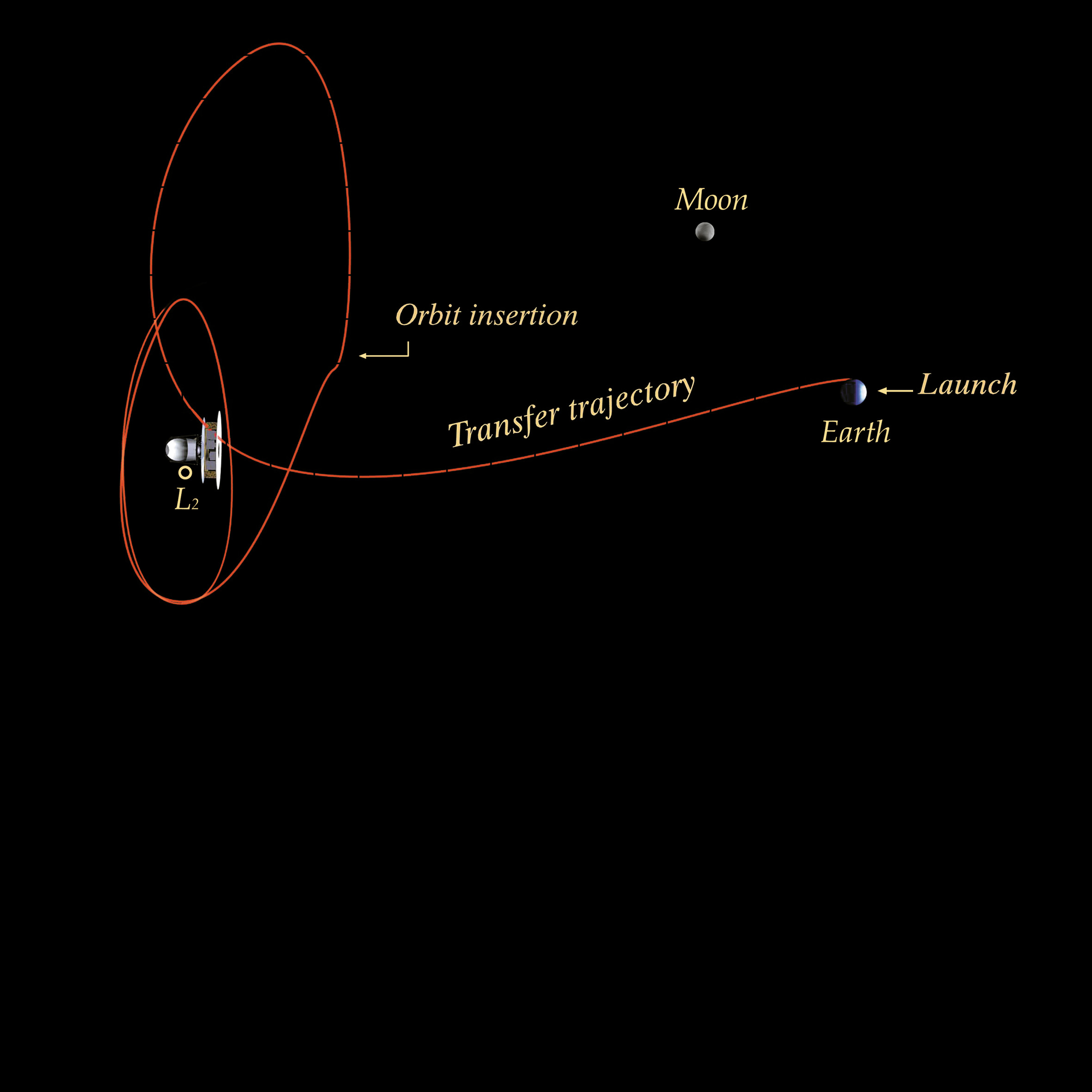
Planck's orbit around L2, the second Lagrange point of the Sun-Earth system.
Sky Tapestry by Planck Spacecraft
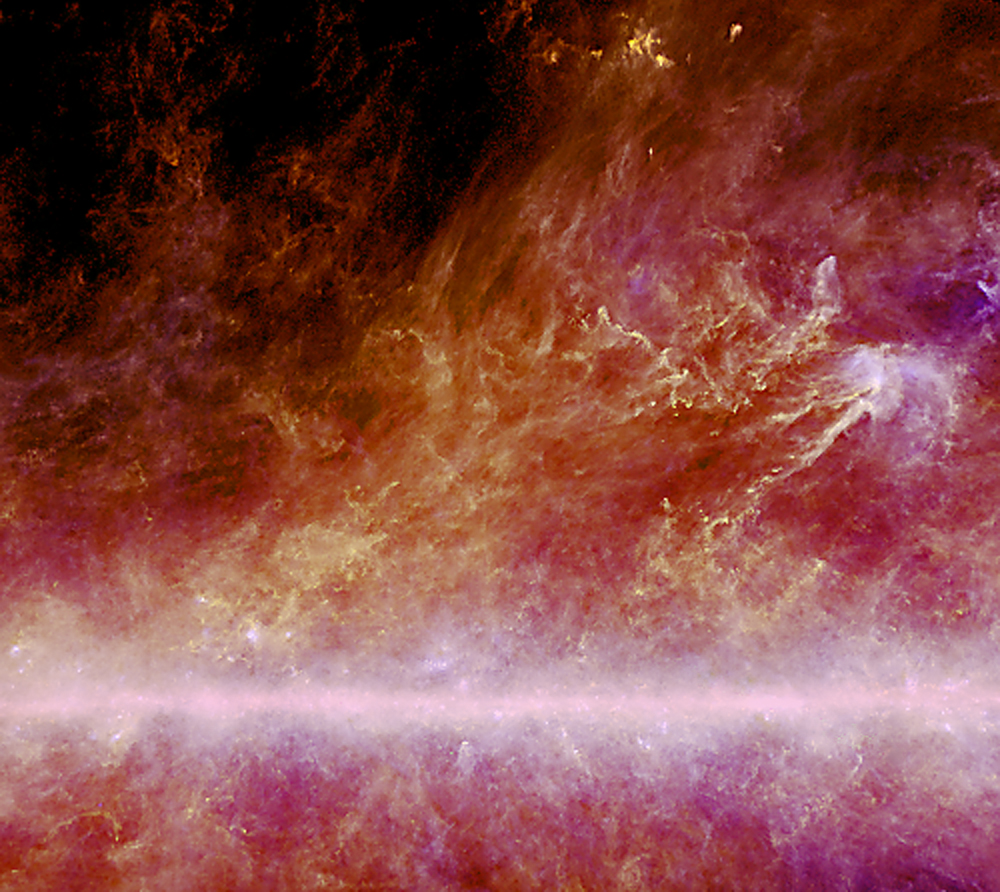
The image spans about 50 degrees of the sky. It is a three-colour combination constructed from Planck’s two highest frequency channels (557 and 857 GHz, corresponding to wavelengths of 540 and 350 micrometres), and an image at the shorter wavelength of 100 micrometres made by the IRAS satellite. It was released on March 17, 2010.
Join our Space Forums to keep talking space on the latest missions, night sky and more! And if you have a news tip, correction or comment, let us know at: community@space.com.

Space.com is the premier source of space exploration, innovation and astronomy news, chronicling (and celebrating) humanity's ongoing expansion across the final frontier. Originally founded in 1999, Space.com is, and always has been, the passion of writers and editors who are space fans and also trained journalists. Our current news team consists of Editor-in-Chief Tariq Malik; Editor Hanneke Weitering, Senior Space Writer Mike Wall; Senior Writer Meghan Bartels; Senior Writer Chelsea Gohd, Senior Writer Tereza Pultarova and Staff Writer Alexander Cox, focusing on e-commerce. Senior Producer Steve Spaleta oversees our space videos, with Diana Whitcroft as our Social Media Editor.









